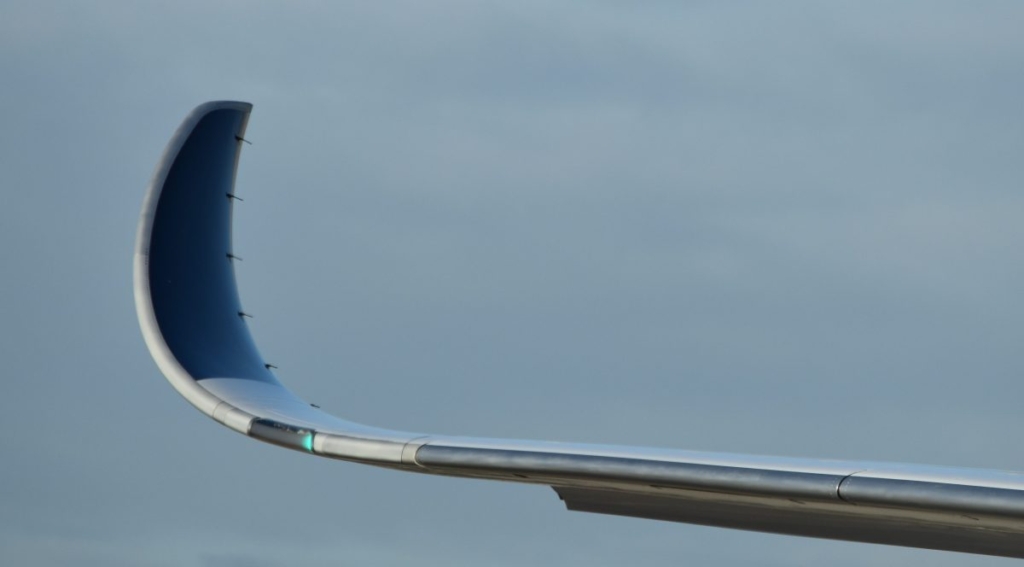
As fuels have only become more expensive, the importance of reducing weight and increasing fuel efficiency in aircraft has only become more pressing. Carbon fibre reinforced plastics (CFRPs) can be used in two ways in aircraft. The first is to complement traditional materials in legacy aircraft designs. The second is to completely replace materials like aluminium in major structural components.
Carbon Fibre in Legacy Aircraft
The first way that they are used is perhaps less commonly known than the second way they are used. Older Boeing 777 models, a long-range passenger plane first launched in 1994, use carbon fibre reinforced composites in their tails, engine housings, and structural components in the floor. These components account for 10% of the aircrafts’ weight. Newer versions of the 777, known as the 777x, additionally use CFRPs in some wing components. The Airbus A380, the largest passenger plane in the world, also uses carbon fibre reinforced plastics in similar components. On the A380, the inclusion of CFRPs and other composites saves an incredible 15 tonnes.
Carbon Fibre in New Aircraft
Newer and more advanced aircraft designs use carbon fibre on a larger scale. There are a number of well-known aircraft, like the Boeing 787 Dreamliner and Airbus A350 XWB, that use CFRPs extensively. On these aircraft the CFRPs account for roughly 50% of the aircraft weight. The main fuselages of the Boeing 787 and Airbus A350 XWB are made from carbon fibre. The Boeing 787’s main fuselage is wound on what is essentially a very large filament winder used to wind pressure vessels. We have written about this filament winding process for pressure vessels before.
Building fuselage sections as single components, allows for fewer failure points where cracks can occur from the pressure cycles that aircraft go through during each flight. This is partly why Boeing was able to put much larger windows in the 787 compared to traditional aluminium aircraft. Aluminium aircraft have to have smaller windows that will minimise the likelihood of stress cracks appearing around their edges. Some highly advanced military aircraft like the American B-2 and F-22 also use CFRPs.
Designing new aircraft with carbon fibre from the outset also allows for the production of more complex and efficient shapes. The Airbus A350 XWB, for example, has wingtips that gently curve from horizontal to near vertical, which allow the aircraft to reduce wake turbulence and thus increase efficiency.
Of course, one of the most important characteristics of carbon fibre is the reduced weight. On any aircraft, weight is one of the most important considerations. One perfect example of just how precious every extra kilogram is on a plane, consider that some airlines replace paper manuals on their planes with iPads and digital manuals for pilots to save weight, reduce fuel burn, and save costs. The lengths taken to reduce weight on aircraft are extensive. These examples show why aeroplane manufacturers and airlines justify higher production costs for CFRP aircraft like the 787 and A350 XWB.Challenges to CFRPs in Aircraft
While these benefits exist, there are challenges to using CFRPs on aircraft. The most pressing concern is the danger posed by lightning strikes to CFRP aircraft. The exterior skin of a traditional aluminium aircraft is conductive, meaning that a lightning strike will pass around the skin with little resistance and cause little damage. NASA estimates that commercial aircraft are hit by lightning twice a year.
CFRPs on the other hand, unlike aluminium, are non-conductive which means that a lightning strike cannot easily pass around the aircraft and continue on towards the ground. CFRPs hit by lightning can shatter and crack or become weakened and become unsafe. To remedy this, the exterior of a carbon fibre aircraft must be augmented with conductive materials, like a wire mesh, so that the composite material is protected. This solution, however, eats into the weight savings originally afforded by using carbon fibre.
The second is the repairability of the carbon fibre composite material; repairs to exterior aluminium components can often be done by bolting a panel to any damaged section, which can take the strain of repeated compression and decompression. This can happen when accidents like tail strikes occur. CFRP components, however, cannot be easily repaired with a bolt-on “patch”, as much of the strength of a woven carbon fibre composite comes from the tensile strength of a continuous carbon fibre filament, which is degraded when the fibres themselves are compromised.

